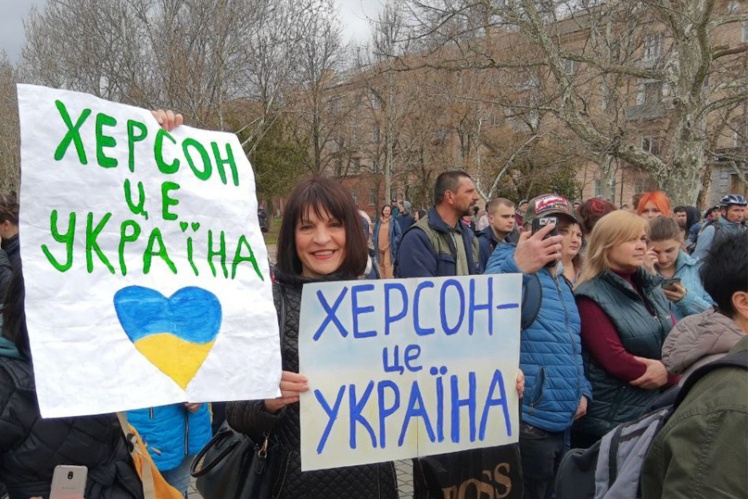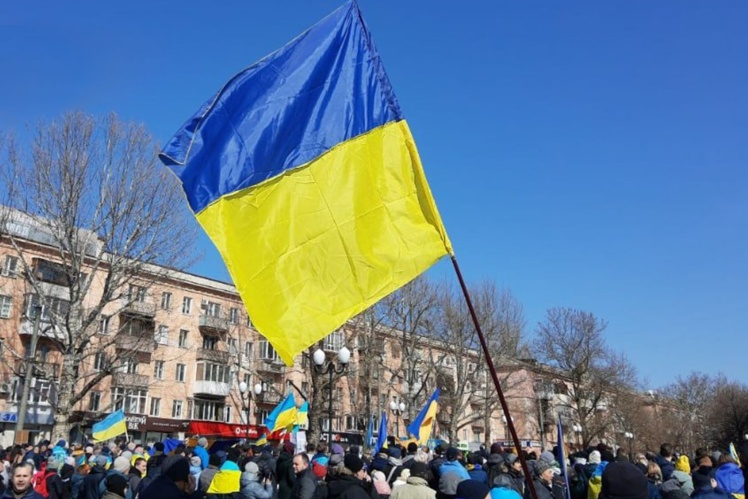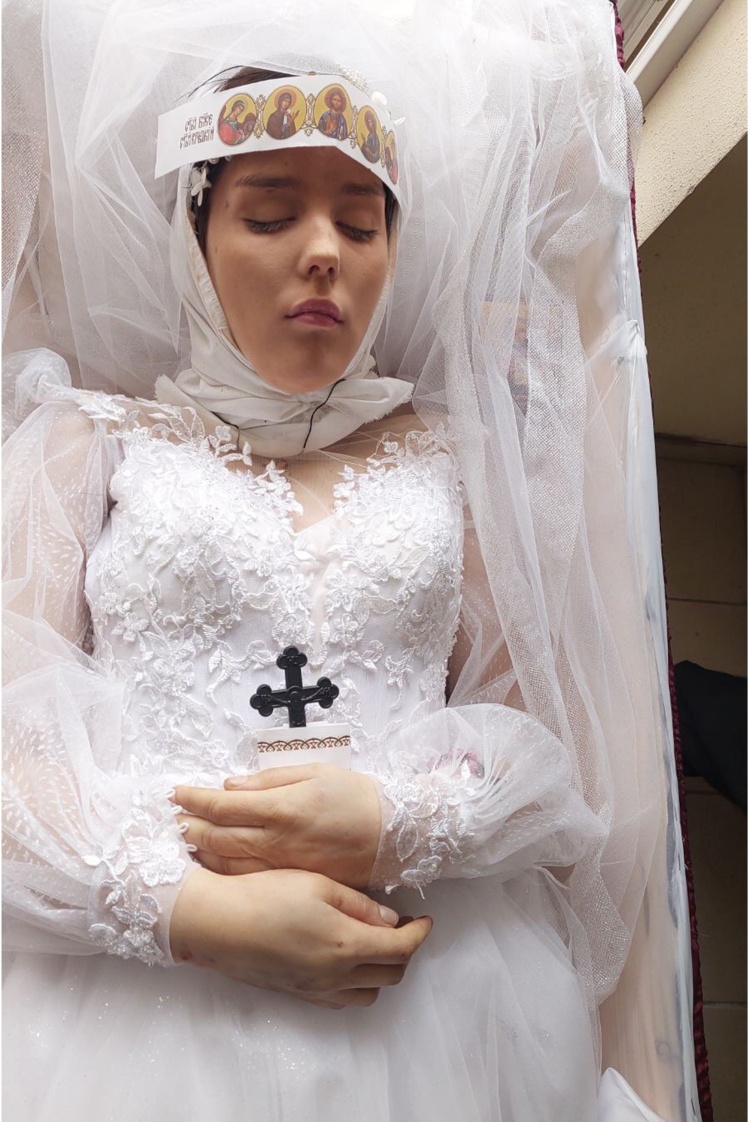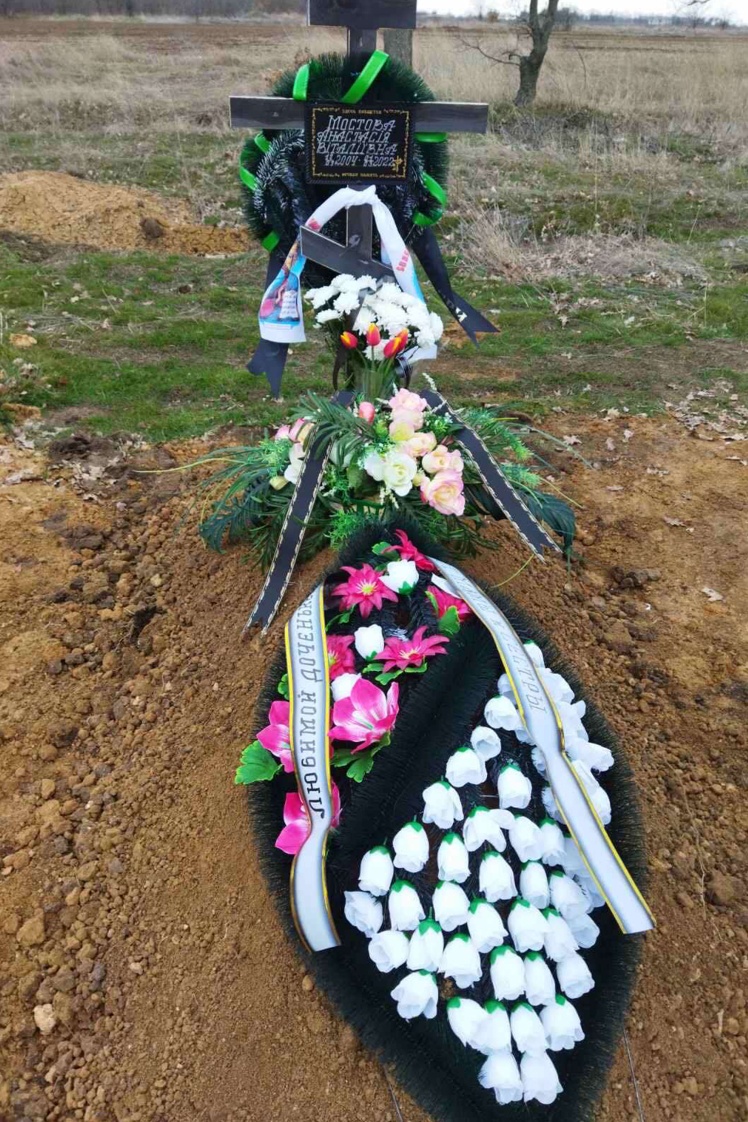On the first day of the full-scale Russian invasion, a large number of Russian military equipment entered Kherson Oblast. On February 25, the occupiers already managed to capture Antonovsky Bridge across the Dnipro River, which connects Kherson with the left bank, in particular with Oleshky and Hola Prystan towns. And on February 28, the Russians blocked the city and launched an offensive. On March 1, Russians stormed Kherson, and in the evening of the next day, the occupiers were already in all districts of the city.
Since then, Kherson has been under occupation. On March 4, Kherson residents began to hold peaceful rallies against the occupiers. The Russian military fired into the air to disperse the people, but the Ukrainians were not intimidated. In the following days, people went to rallies again and not only in Kherson but also in other cities of the oblast. In response, the occupiers detained people, used smoke, light, and noise grenades, and fired into the air and later at protesters.
Back in March, the occupiers planned to hold a "referendum" in Kherson to create a so-called "Kherson Peopleʼs Republic" and join Russia, as well as to put the Russian ruble into circulation. But so far they have not been able to realize their intentions due to the resistance and active position of Ukrainians in the temporarily occupied territories. Even the Kherson City Council, headed by Mayor Ihor Kolykhayev, worked under the Ukrainian flag until April 25, when the council building was seized by the occupiers.
From the first days of the invasion of Kherson, the occupiers began looting, kidnapping, and killing civilians. According to the Kherson City Council, about 40 civilians died in the city on March 1-2 alone. One of them was 17-year-old Nastya Mostova.
Nastyaʼs mother, Tetiana Mostova, moved to Kherson from Odesa in the 1990s. She was a servicewoman then. But in Kherson, she found a civilian job in a bakery.
Prior to Russiaʼs full-scale invasion of Ukraine, Tetiana worked, cared for her two daughters, and grew flowers in her backyard. In the first days of the invasion, the older daughter called her. She lived with her husband and a child in the suburb of Kherson — Antonivka settlement. The daughter told her mother that she plans to leave Antonivka with other women immediately. Then a column of enemy vehicles crossed the Antonivsky Bridge. The husband of Tetianaʼs older daughter is now at the frontline, she and her child are in Lviv.
The younger daughter, Nastya, stayed in Kherson. She lived with her boyfriend separately from her mother. The girl played two musical instruments, and was especially good on bandura. Nastya sang, participated in vocal competitions, performed at concerts, and also engaged in various kinds of needlework.
«Babel'»
When the fighting and occupation of Kherson began, the bakery where Tetiana worked was first closed for a few days. Then the work was resumed, but only bread was baked, although the range of products before was much wider. The bread was distributed for free to all who needed it.
From the first days of the invasion of Kherson, the Russians, according to Tetiana, opened fire very often on almost everyone who caught their eye. In the local Telegram messenger channels residents were asked not to go outside without urgent need. Despite this, Nastya and her friend and namesake came to her mother on March 1 for groceries. Another Nastya was the sister of the boyfriend of Tetianaʼs daughter. She was raising a young son, who is now 1 year and 8 months old.
It was snowing in Kherson that morning, and it was raining at noon. So the girls came to Tetiana wet and frozen. "My Nastyaʼs boyfriend did not want to come, although I asked to send him to bring all the bags. So my Nastya came with his sister. They arrived at about 2 pm, wet and frozen. I sent them to the hot shower, changed them into my sports suits, gave them two pairs of socks because they were both sitting and trembling,” says Tetiana.
"They sat in Nastyaʼs room on the couch, and my Nastya has a lot of boxes here," Tetiana shows the boxes and her younger daughterʼs latest work, an embroidered icon on a small canvas. "They poured all the jewelry out of it on the sofa. She did not wear jewelry at all, she did not even wear gold, and this is imitation jewelry and they put it on. Nastya put on a bracelet, I quarreled with her over that black and purple bracelet with skulls, and she said, "No, Mom, you donʼt understand anything." She wore it and amber beads, although she had never worn them before. Another Nastya also wore earrings, bracelets, and a necklace.
«Babel'»
Tetiana was already in a hurry to get the girls out, worried that they wouldnʼt get home on time. But the girls saw how many bags they needed to bring and started calling Nastyaʼs boyfriend Oleh and another friend Vahik. They both refused to help them until the girls said they would "stay the night with aunt Tanya." Then Vahik agreed to come after them by car and waited near the house.
"The girls ran out, I told them to come tomorrow, because I have a day off, and Iʼll cook them borshcht and fry a lot of stuffed buns. It was about 4 pm. I called Vahik and asked him to call me when he would bring them so that I wouldnʼt worry. You know if it was a premonition or something. I literally kicked them out to get there faster,” Tetiana recalls.
Until six in the evening, no one called her. The woman began to worry and call Oleh. He said they had not arrived yet. Tetiana dialed him again and again, later he even stopped picking up the phone. And so the 7, 8, 9 pm passed.
Only at 10 pm, Oleh called with the words: "Aunt Tanechka, Vahikʼs car was shot near the border guard base, but there are two people in the car, there is someone else near the driver." Tetiana realized at once that it was the sister of her daughterʼs boyfriend. This was later confirmed. Her Nastya was not in the car.
The older daughter reassured Tetiana, saying: "Mom, you know that everything will be fine with our Nastya, she has a strong guardian angel." So the next day the woman woke up, started cooking borshcht, and fried a whole mountain of buns, as she promised the girls that they would have enough for a few days.
At that time, Nastya was already searched for all over the city. At about 7 pm on March 2, the woman received a phone call from an acquaintance, Mykola, who also took part in the search: “Aunt Tanya, I am in the morgue now. Did Nastya have any jewelry on her?”
"Kolya, she never wore jewelry," Tetiana did not immediately mention that the girls were dressed in jewelry, which they poured out of the box. "Wait, she had a black-and-purple bracelet with skulls and sort of amber blue beads.”
«Babel'»
In response, Tetiana heard the worst: "Hold on, this is your Nastya, we found her." The woman recalls that she cried in a way that she tore her vocal cords, and she couldnʼt even speak: "My poor neighbors, I just feel sorry for them for the time when I was told that Nastya was gone. From the second floor, a married couple just pulled me by the arms."
According to Tetiana, the events of the evening of March 1 developed approximately as follows. Nastya got out of Vahikʼs car at the intersection of Bohdan Khmelnytsky and Perekopska Streets. Perekopska is one of the main streets in Kherson. Tetiana says she doesnʼt understand why they went there because Vahik promised not to take the main road. He already knew then that the occupiers had entered the city. Tetiana doesnʼt know why her Nastya got out of the car at the crossroads. But the girl did not have time to take a few steps, as she was shot by Russian soldiers. According to Tetiana, Vahik and another Nastya could have been shot in pursuit when they fled after what they saw. There were no video cameras nearby to confirm the allegations. There were only people from neighboring houses. As the Russians fired on Vahikʼs car, people started shouting at them, and then the Russians started firing at those who shouted as well.
«Babel'»
After some time, Tetiana met her daughterʼs boyfriend Oleh on the street near the place of execution, where she brought flowers. He was walking with another girl. The woman asked how he was doing. "Well, 50/50," the guy replied. He and his sister had no parents. The son of another deceased Nastya, Olehʼs nephew, was taken away by a foster family. Tetiana knew little about Vahik, only that he lived in Antonivka, and had a wife and two children.
After Nastyaʼs murder, Tetiana completely switched to Ukrainian language. She says Russian language is taboo for her now. She also admits that sometimes she thinks that her daughter will still run, open the door and exclaim: "Mom, Iʼm hungry, give me food." Tetiana tries to say these words in a louder voice, probably like her daughter. In memory of her, the woman named the alley of hibiscus, which she planted in her yard.
«Babel'»
At the end of March, the woman was able to go to relatives in Odesa. Volunteers helped her with this, the ticket cost UAH 2,500. The road was difficult. For about six hours they went from Kherson to Mykolayiv past checkpoints of the Russian military. The occupiers kept them on one of the checkpoints until they took the branded sports trousers from the boy on the bus. In the evening they got to Odesa. The woman was surprised that all the drivers gave way to their buses, which looked like tanks because of the dirt.
There are no new details about the shooting of her daughter — witnesses donʼt come forward, and the occupiers do not comment on the shooting of civilians in Kherson.
Support Babel:🔸donate in hryvnia🔸in cryptocurrency🔸via PayPal: [email protected].







